Models
Type of resources
Topics
Keywords
Contact for the resource
Provided by
Years
Formats
Representation types
Update frequencies
-
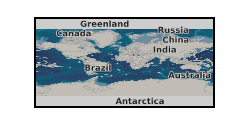
Data for NERC grant NE/L000660/1. This is the data supporting Fig. 4 of the publication: Ebigbo, A., Lang, P. S., Paluszny, A., and Zimmerman, R. W. (2016). Inclusion-based effective medium models for the permeability of a 3D fractured rock mass. Transport In Porous Media, DOI: 10.1007/s11242-016-0685-z. It contains numerically computed permeabilities for various realisations of fracture networks. There are six different cases (as explained in the paper).
-
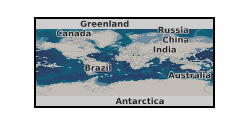
Elastic constants were calculated by using the stress-strain method and density functional theory for crystals of different symmetry. A toolkit was developed to facilitate the input preparation and output processing for elastic calculations using the Vienna Ab Initio Simulation Packge (VASP). The details of the calculation. methods, and the toolkit will be published elsewhere and linked to this deposit. The deposit contains example folders for the monoclinic, orthorhombic, trigonal, tetragonal, hexagonal and cubic lattices. The purpose of this deposit is to provide examples for the toolkit users.
-
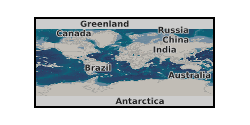
ShapeCalc is an Excel-based tool that uses 2D crystal intersection widths and lengths to estimate 3D crystal shape. ShapeCalc provides 3D (S:I:L) shape estimates for 2D width-length (w-l) input data. Best estimates are found by comparing the sample w/l distribution with 2618 model w/l distributions covering shapes from 1:1:1 to 1:20:20. Model w/l distributions are obtained by 20000 random sections of a given model shape using the CSDCorrections algorithm (Higgins, 2000). For each model shape, the 20000 w/l datapoints are binned into 25 bins with w/l increments of 0.04. Binned distributions for all 2618 models are stored in the database tab. Compared to existing 2D-to-3D projection tools, ShapeCalc offers more robust constraints in 3D crystal shape (including uncertainty estimates) for a wider range of naturally occurring crystal shapes. ShapeCalc is described and published, with open access; Mangler, M.F., Humphreys, M.C.S., Wadsworth, F.B. et al. Variation of plagioclase shape with size in intermediate magmas: a window into incipient plagioclase crystallisation. Contributions to Mineralogy and Petrology 177, 64 (2022). https://doi.org/10.1007/s00410-022-01922-9
-

This dataset comprises ECLIPSE input decks for a 3D reservoir simulation of the CO2 plume at the Sleipner CO2 injection site. This whole reservoir model is an attempt to history match the growth of the plume observed on seismic data. A seismic velocity and density model derived from the 3D reservoir simulation is also included, together with a series of Seismic Unix scripts to create a synthetic seismic section through the Sleipner reservoir model, for comparison with released time-lapse seismic data.
-
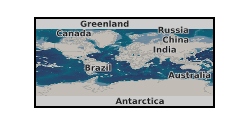
This data was collected as a part of the UK CCS Research Centre Call 2 Project C2-197: Multi scale characterisation of CO2 Storage in the United Kingdom. This is tabular data and X-ray imagery of drainage and imbibition relative permeability measured on reservoir rocks from the S. North Sea, N. North Sea, and E. Irish Sea of the Offshore UK. The data were obtained through measurements made at two distinct flow rates to allow for an evaluation of the impact of rock heterogeneity. Full details of the rock properties and experiments can be found in Reynolds et al. (2018) reference 3 below, the Final Report of the Project, as well as in the PhD Thesis of Catriona Reynolds with full references given below. Any use of the data should reference the journal article, reference 3 below. Geographical Area - Bunter sandstone in S. North Sea, Cleethorpes-1 Well, 1312.7-1316.1 m depth; Ormsirk sandstone in E. Irish Sea, Block 110/2a, 1247.9-1248.1 m depth; Captain sandstone in N. North Sea, Well 14/29a-3, 2997.6-3005.1 m depth. References 1. Imperial College London and British Geological Survey, Multiscale Characterisation of CO2 Storage in the United Kingdom, UKCCSRC Call 2 Project Final Report, 2016 2. Reynolds, C. Two-phase flow behaviour and relative permeability between CO2 and brine in sandstones at the pore and core scales, PhD Thesis, 2016, Imperial College London. 3. Reynolds, C.A., Blunt, M.J., Krevor, S. 2018, Multiphase flow characteristics of heterogeneous rocks from CO2 storage reservoirs in the United Kingdom, Water Resources Research, 54, 2, 729-745
-
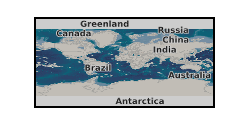
General circulation model (HadCM3) output of the study by Matero et al. (2017) “The 8.2 ka cooling event caused by Laurentide ice saddle collapse. Data has been processed into netCDF4 - timeseries, and includes the following variables at model resolution: ocean temperature, ocean salinity, precipitation, air temperature at 2m height, depth of the oceanic mixed layer, sea ice concentration and meridional overturning circulation strength. The atmosphere component of the model has a horizontal resolution of 2.5° x 3.75° with 19 unevenly spaced vertical layers. The ocean component has a horizontal resolution of 1.25° x 1.25° with 20 unevenly spaced vertical layers. For more information see published paper, https://doi.org/10.1016/j.epsl.2017.06.011
-
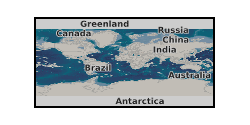
The data presented here contains the experimental X-ray CT dataset used for the paper "Characterising Drainage Multiphase flow in Heterogeneous Sandstones" by Jackson, Krevor et al (DOI 10.17605/OSF.IO/WCXNY), along with CMG IMEX modelling files. Core averaged pressure data and saturations, along with 1D saturation profiles are available in the supporting information fle. CT data is provided in the four '..._scans' folders. These contain reconstructed .dicom tomographs from X-ray CT imaging with native resolution 0.234375mm x 0.234375mm. The image thickness is 5mm for the Bentheimer and 3mm for the Bunter. Each files contains 3x scans for each fractional flow. Dry, water, brine equilibrated with CO2 (labelled SW), nitrogen and CO2 background scans are also provided, which are obtained after single phase core flooding. CMG IMEX .dat files contain the necesary input files for CMG IMEX to run the numerical core flood simulations (the low flow rate core flood examples are included). These have associated .inc files for the 3D capillary pressure scaling (the end point of the capillary pressure curve at irreducible water saturation) and the 3D porosity map. These are read into the simulation files on execution. The porosity and capillary pressure files are for the final, full length rock cores used to produce the main figures in the paper (Figure 5 onwards). The outputs from the CMG IMEX simulation can be read into the 3D results viewer where 3D saturations and pressure drops are obtained. This work was funded by the Natural Environment Research Council (Grant number: NE/N016173/1).
-
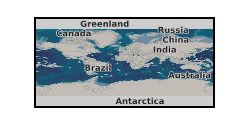
This dataset contains digital models of three carbonate (Indiana limestone, Estaillades limestone and Edwards Brown Dolomite) and two sandstone (Bentheimer and Bunter) cores with varying degrees of heterogeneity types and length scales. The models define the spatial distribution of porosity and capillary heterogeneity, and can simulate core floods. To build these models, the workflow by Jackson et al. (2018) was followed. It combines observations from coreflood experiments with a numerical optimisation scheme to characterise the capillary heterogeneity within a rock sample. The data presented here contains the experimental X-ray CT dataset used for the paper "History Matching Core Floods in Heterogeneous Sandstone and Carbonate Rocks" by Wenck et al. (Under Review) along with CMG IMEX modelling files. Funding source: EPSRC iCase studentship with BP
-
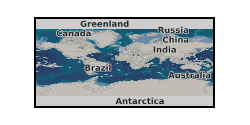
Open source modeling code, with which all data were generated: https://github.com/kuangdai/AxiSEM-3D This code was primarily developed within the NERC-funded project, and used for a at least 10 publications over the past two years: [1] Wolf, Long, Leng, Nissen-Meyer. Sensitivity of SK(K)S and ScS phases to heterogeneous anisotropy in the lowermost mantle from global wavefield simulations, 2021. GJI, 228, 366–386, https://doi.org/10.1093/gji/ggab347 [2] Krier, Thorne, Leng, Nissen-Meyer: A compositional component to the Samoa ultralow-velocity zone revealed through 2- and 3-D waveform modeling of SKS and SKKS differential travel-times and amplitudes, Journal of Geophysical Research. doi:10.1029/2021JB021897 [3] Thorne, M. S., Leng, K., Pachhai, S., Rost, S., Wicks, J., & Nissen-Meyer, T. (2021). The most parsimonious ultralow-velocity zone distribution from highly anomalous SPdKS waveforms. Geochemistry, Geophysics, Geosystems, 22, e2020GC009467. https://doi.org/10.1029/2020GC009467 [4] Haindl, Leng, Nissen-Meyer, 2021. A 3D Complexity-Adaptive Approach to Explore Sparsity in Visco-Elastic Wave Propagation, Geophysics, doi.org/10.1190/geo2020-0490.1 [5] Tesoniero, Leng, Long, Nissen-Meyer. Full wave sensitivity of SK(K)S phases to arbitrary anisotropy in the upper and lower mantle, Geophysical Journal International, 222, 412–435, https://doi.org/10.1093/gji/ggaa171 [6] Thorne, M.S.; Pachhai, S.; Leng, K.; Wicks, J.K.; Nissen-Meyer, T, 2020. New Candidate Ultralow-Velocity Zone Locations from Highly Anomalous SPdKS Waveforms. Minerals 2020, 10, 211. [7] Fernando, Leng, Nissen-Meyer, 2020. Oceanic high-frequency global seismic wave propagation with realistic bathymetry, Geophysical Journal International, 222, 1178–1194, https://doi.org/10.1093/gji/ggaa248 [8] Leng, Korenaga, Nissen-Meyer, 2020. Three-dimensional scattering of elastic waves by small-scale heterogeneities in the Earth’s mantle, Geophysical Journal International, 223, 1, 502–525, https://doi.org/10.1093/gji/ggaa331 [9] Szenicer, Leng, Nissen-Meyer, 2020. A complexity-driven framework for waveform tomography with discrete adjoints, Geophysical Journal International, https://doi.org/10.1093/gji/ggaa349 [10] Leng, Nissen-Meyer, van Driel, Hosseini, Al-Attar, 2019. AxiSEM3D: broad-band seismic wavefields in 3-D global earth models with undulating discontinuities, Geophysical J Int., 217, 2125–2146 Each of publications is based on the code mentioned above, and metadata for running the simulations of the papers are given therein, in a reproducible manner.
-
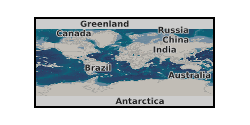
Data output from the numerical flow modelling in GRL manuscript ""Evidence for the top-down control of lava domes on magma ascent dynamics"", by Marsden, L., Neuberg, J. & Thomas, M., all of University of Leeds. The models were created using the Laminar Flow module in COMSOL Multiphysics v5.4 by L. Marsden. The following files are uploaded: Archive_Reference_Model.txt (Reference flow model: Gas loss function, Initial H2O content = 4.5 wt.% Excess pressure at depth = 10 MPa, Constant corresponding to crystal growth rate = 4e-6 s^-1 ) Archive_High_H2O.txt (Gas loss function, Initial H2O content = 10 wt.% Excess pressure at depth = 10 MPa, Constant corresponding to crystal growth rate = 4e-6 s^-1) Archive_No_Gas_Loss.txt (No gas loss, Initial H2O content = 4.5 wt.% Excess pressure at depth = 10 MPa, Constant corresponding to crystal growth rate = 4e-6 s^-1) Archive_Gamma_Low.txt (Gas loss function, Initial H2O content = 4.5 wt.% Excess pressure at depth = 10 MPa, Constant corresponding to crystal growth rate = 1e-6 s^-1) Archive_Excess_Pressure_0MPa.txt (Gas loss function, Initial H2O content = 4.5 wt.% Excess pressure at depth = 0 MPa, Constant corresponding to crystal growth rate = 4e-6 s^-1) Archive_Excess_Pressure_20MPa.txt (Gas loss function, Initial H2O content = 4.5 wt.% Excess pressure at depth = 20 MPa, Constant corresponding to crystal growth rate = 4e-6 s^-1) The files uploaded include the reference flow model and where a single key parameter has been changed in the flow modelling. We include data where the key parameter is at the upper or lower limit of the values tested. Data are not included where magma ascent is modelled to stall without the extrusion of a lava dome, as a time dependent model is not run in this case. A solution is provided using equilibrium modelling only. The following variables are output, at conduit centre unless specified: Depth (m), Time(s), Ascent velocity (m/s), Bulk Viscosity (Pa s), Crystal Content, Dome height (m), Gas Volume Fraction, Overpressure (Pa), Shear Stress at Conduit Wall (Pa)
 BGS Data Catalogue
BGS Data Catalogue